Identification of wolverine tracks in the field can be tricky. Below are some details of wolverine tracks and track patterns. Not sure if the track you found are wolverine? Download our Quick Guide to wolverine track identification and how to document tracks in the field. Take some photos and send us your observation and we will help sort it out!
Individual Tracks
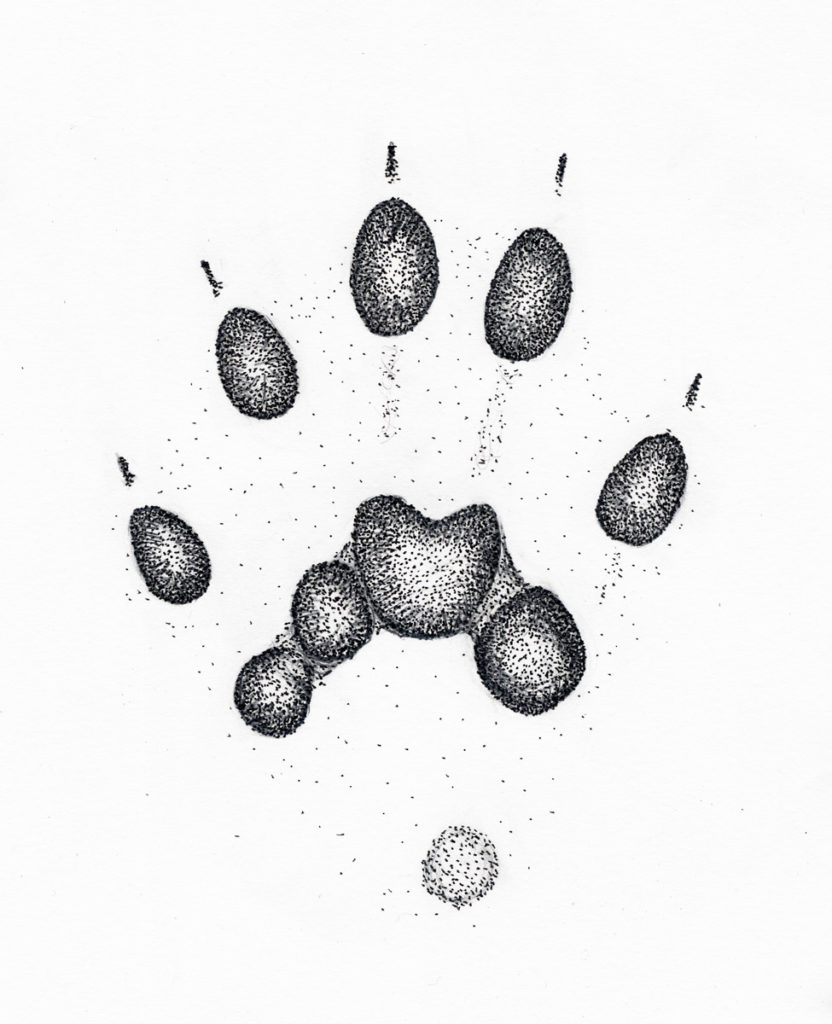
Wolverine Front Track
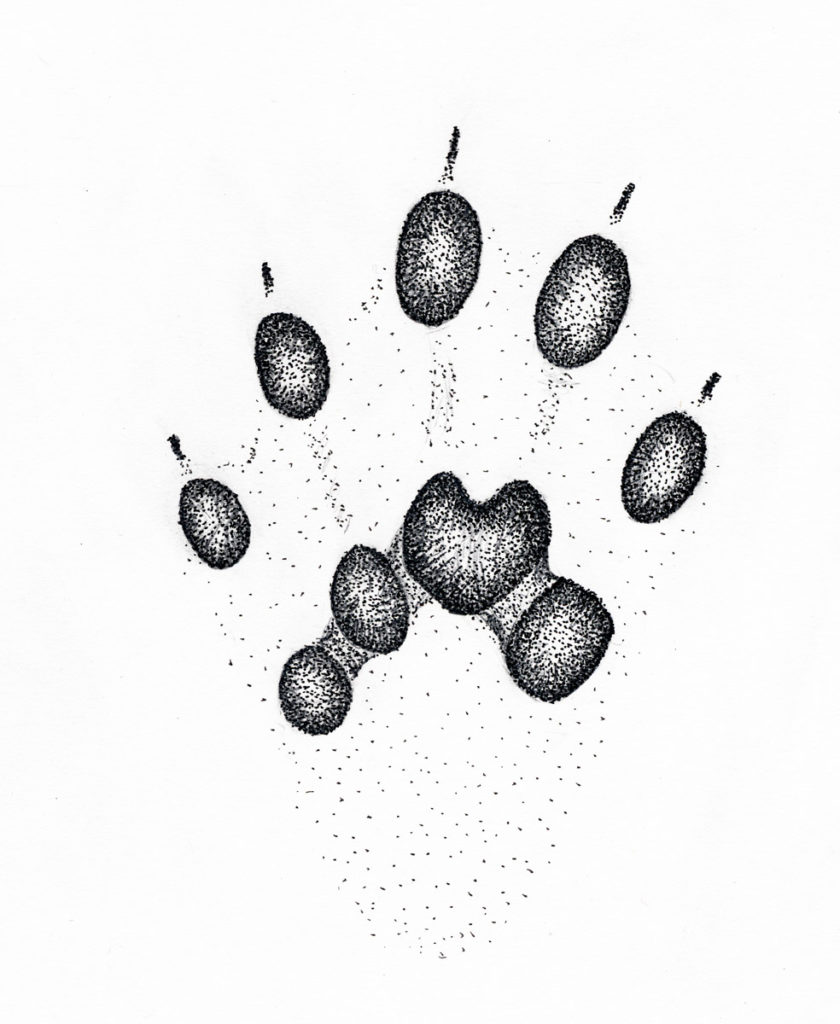
Wolverine Hind Track
- Overall size and shape: Front and hind tracks are similar in size and shape, with the front slightly wider than the hind. The heel registers sometimes but not always, giving the track either an ice-cream cone shape or round shape. Toes and palm pad may appear slightly obscured by fur but will still register deeper than the rest of the foot. Similar in size to wolf (and some domestic dogs), lynx, bears, and mountain lions. Wolverine tracks are larger than all other species they overlap with. Tracks can range in size from 3.5-7 inches long by 3-5 inches wide.
- Toe shape and arrangement: Front and hind feet have five toes which typically all register. Occasionally the smallest inside toe doesn’t register, especially on the hind track. When this occurs, the track can be more easily confused with canids or felids. Toes arranged in a relatively even arc, rather than in a two-ranked appearance as presents in canids. Arrangement of the toes is similar in front and rear tracks, distinctive amongst mustelids, with other species showing a greater degree of difference between front and hind tracks with the hind track typically showing a greater degree of pairing between toes 3 and 4 than commonly presents in wolverine tracks. Toes are similar in size and oval (rather than teardrop shaped as is common in some other species).
- Metacarpal and metatarsal pad (palm): Relatively narrow and comprised of four distinct subpads, the largest of which, associated with toes 3 and 4, having a flat to bilobed leading edge. Asymmetrical with the inside smaller and registering lower than the outside. Occasionally the inside subpad doesn’t register or registers more lightly than the rest of the palm. Thinner than bears and mountain lions. Asymmetry and shape of the leading edge of the pad distinguishes it from canids.
- Claws: Typically register in tracks but not always. Similar in size and shape between front and hind with front claws slightly longer. Length of claws slightly less than the length of the associated toe pad.
- Heel: A rounded cone shape. A single naked round carpal pad found on the front foot. The entire heel of the hind track is furred. Heel may or may not register in tracks but shows up far more often than in canids and felids.
- Interdigital space: Toe pads do not connect to the palm pad and the space between these structures is relatively large, greater than in all other similar sized prints of carnivores except for occasionally lynx, where the space may be similar sized but shaped differently due to the distinctively two-ranked arrangement of the 4 toes. Length of this space is typically as long or longer than the length of toe pads.
Common Track Patterns
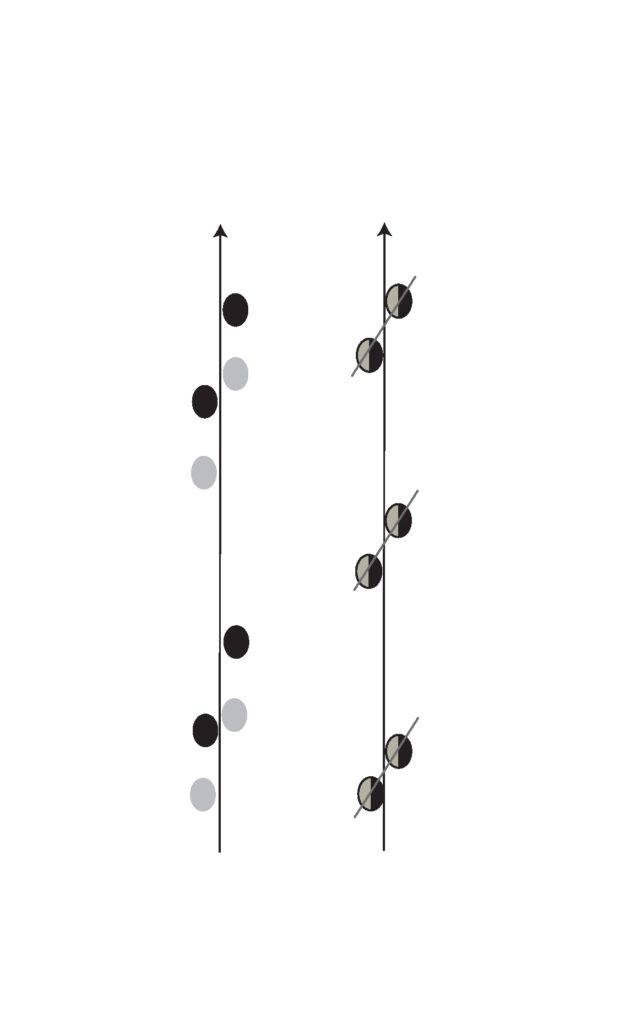
Trail width 7-10 inches. Stride 27-58 inches
- 2×2 (Bound): This track pattern is typically encountered in deep, loose snow conditions. The left and right front tracks land side by side, with one side slightly ahead of the other (2). The hind tracks land directly in the prints left by the front tracks. The 2×2 pattern is consistent with the same side of the pattern (left or right) leading for multiple sets in a row, as opposed to alternating a right lead followed by a left and then a right again (1). Each set of tracks is left in line with the next (as opposed to an alternating right lead, left lead, then right again, etc.). The left and right tracks often touch each other and in deep snow leave one overall shape at the top of the snows surface, with two distinct tracks from left and right sides of the body appearing deeper in the track when conditions allow. At other times the left and right tracks maybe slightly separated and the distance between the leading edge of tracks on each side of the body can vary.
- 1/2/1 (Lope): This track pattern is typically encountered in slightly firmer snow conditions than the previous or when the animal increases its speed. The pattern is made by a front foot, followed by the other front foot paired with the hind from the opposite side of the body (1), followed by the final hind foot. The paired central tracks may touch one another or be slightly separated. The front track may fall behind, directly adjacent to, or slightly ahead of the associated hind. The distance between the first and last track and the center two can vary as can the space between each set of four tracks (2). Other mustelids can produce a similar pattern but the relatively spacing of the tracks and overall size is distinctive to wolverines. No other species typically produce a track pattern similar to this, and none will ever do it with any consistency.
Photograph examples

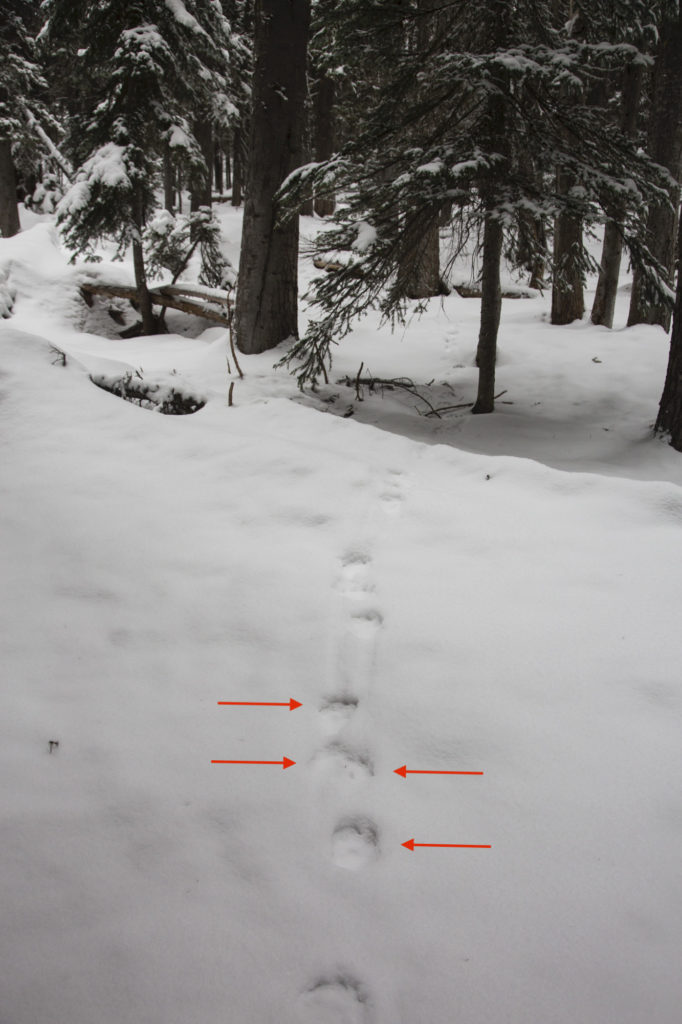
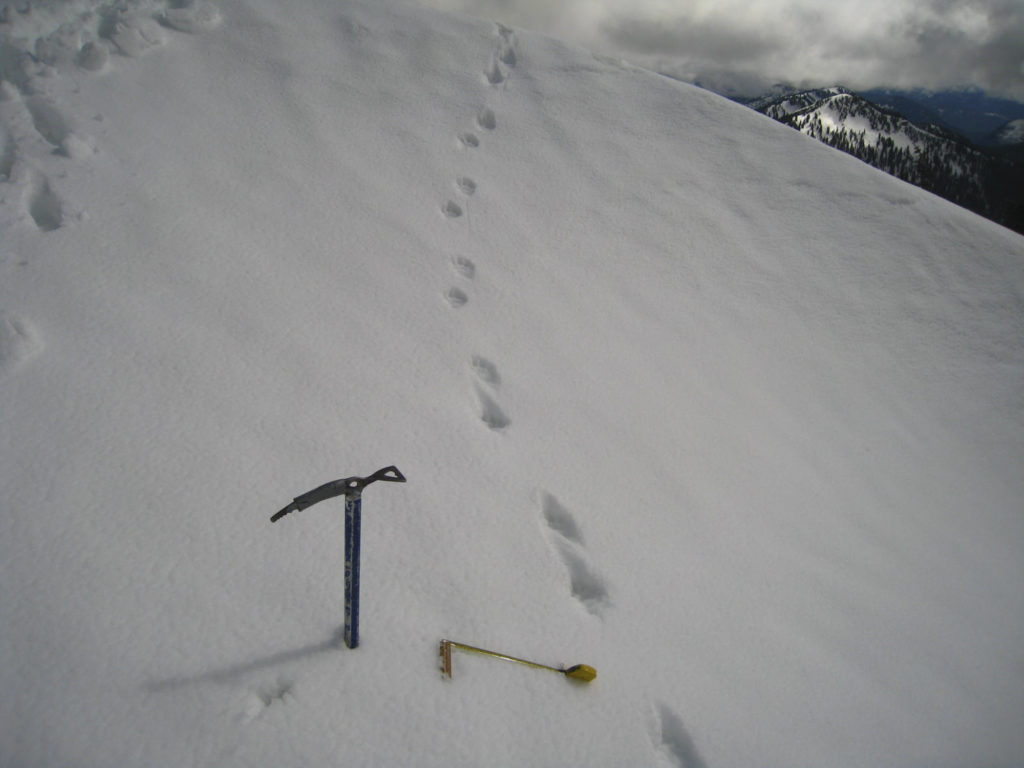
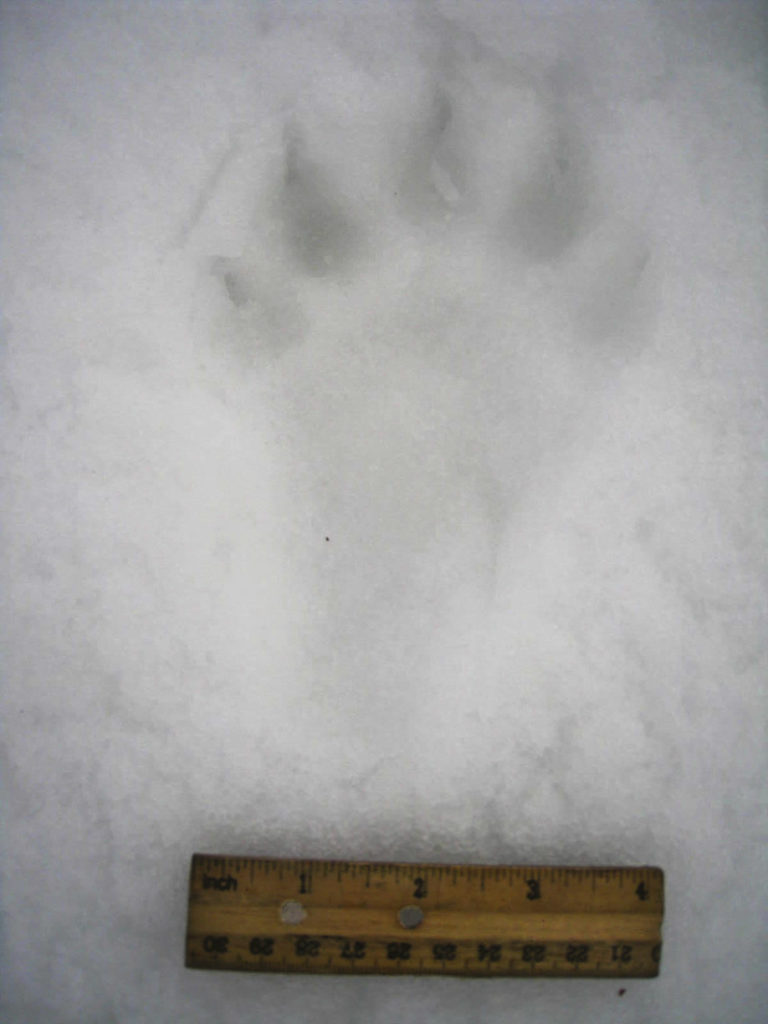
Found tracks in the field? Make sure to photograph individual tracks, the track pattern, and the trail in with the ecological context in which you found it. Please put a recognizable scale in your photo–such as ski pole with centimeter marking on it!
Track illustrations and diagrams above from Wildlife of the Pacific Northwest.
